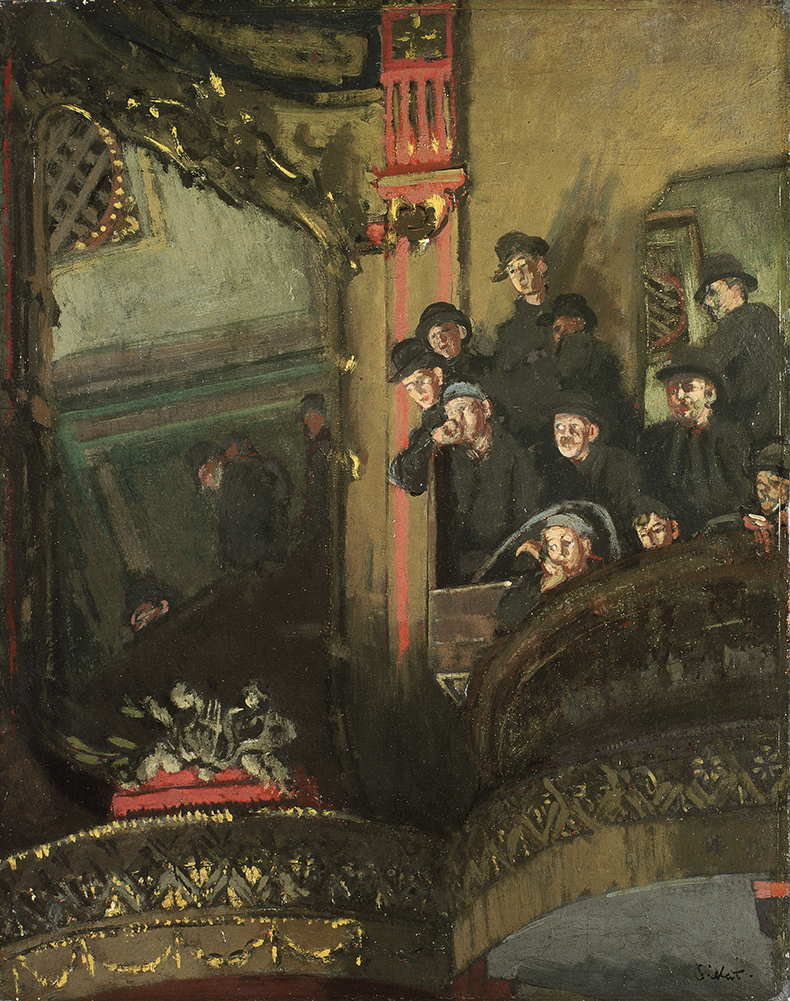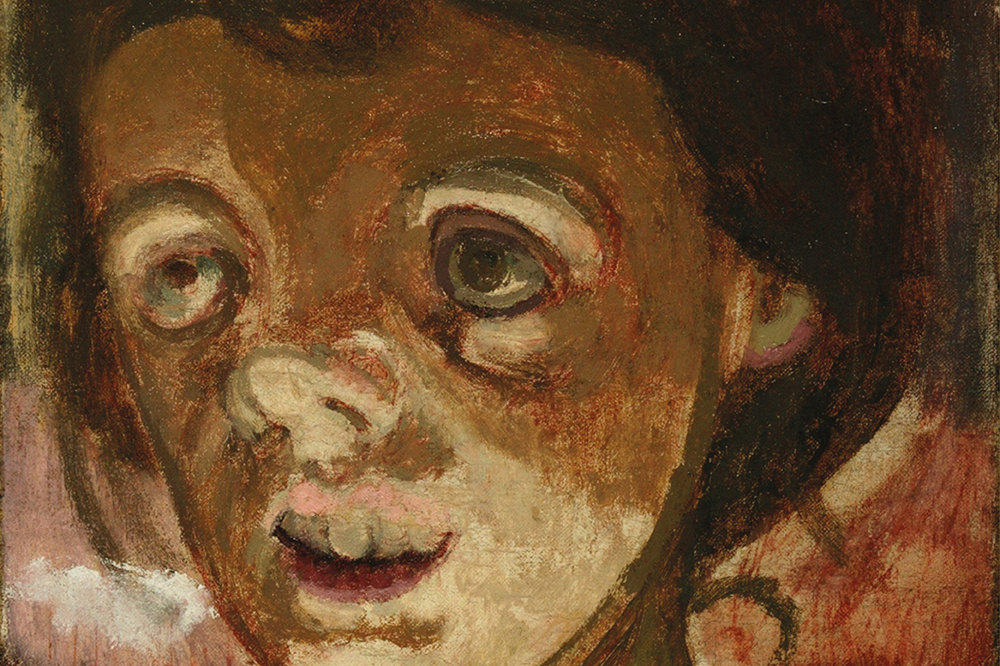From the June 2022 issue of Apollo. Preview and subscribe here.
In her essay, ‘Walter Sickert: A Conversation’, Virginia Woolf worries away brilliantly at the question of what kind of literary painter Sickert is. On the one hand, she writes, maybe Sickert is ‘a great biographer’, because ‘when he paints a portrait I read a life’. Seen another way, he is ‘more of a novelist than a biographer’, because of how he ‘likes to set his characters in motion, to watch them in action’, and because his exhibitions are ‘full of pictures that might be stories’. Either way, what’s clear is that by working in ‘the silent kingdom of paint’ rather than the ‘impure medium’ of words, Sickert is better able than anyone to capture the ‘lies, paltriness, splendour, depravity, endurance, beauty’ of everyday middle-class life in the early 20th century.
This major retrospective at Tate Britain, the largest showing of Sickert’s work in nearly 30 years, bears out Woolf’s words triumphantly. The arrangement of the eight rooms in the exhibition is more thematic than chronological: there are rooms focused on the self-portraits in which Sickert theatrically styles himself in various guises; on his paintings of music halls; on his pictures of Venice and Dieppe; on his nudes; and on his conversation pieces. But there are also rooms at the beginning and the end of the exhibition that manage to work in some sense of his stylistic development, the first showing his apprentice works done under the sign of Whistler and the last showing late pictures, many of them from the 1930s, many based on photographs taken from the popular press, which makes for an unexpected and striking departure from his trajectory in the earlier decades of his career.
Gallery of the Old Bedford (1894–95), Walter Sickert. Walker Art Gallery, Liverpool

There are also a few paintings by other artists in the show, to draw out Sickert’s influences and his influence. One disadvantage of the comparative approach is that the comparison doesn’t always work in Sickert’s favour. The effect of placing his seascapes alongside those of his teacher Whistler, his music-hall paintings alongside a Degas and his nudes alongside works by Bonnard and Lucian Freud is partly to reveal the unevenness of Sickert’s work in comparison to the intensity of vision and realisation that the others achieve. Nonetheless, there are many marvels in this sensitively curated exhibition. Music-hall scenes such as Gallery of the Old Bedford (c. 1894–95) allow Sickert to experiment with points of view that cut across the gaze of the interpolated audiences and with artificial light sources and the long sweeping lines of theatre balconies. The portraits in which Woolf found such novelistic richness (though Sickert preferred the term ‘figure subjects’) seem to come most alive when they become most weird and exuberant, as in his celebrated picture of a snout-nosed Cicely Hey (1923) or Blackbird of Paradise (c. 1892). In general, Sickert’s figure studies of women seem more enlivened by their subject than those of men – which gives a hint towards the paintings of nudes which stand at the centre of this exhibition.
Cicely Hey (1923), Walter Sickert. The Whitworth, University of Manchester

Although he was engaged in nudes for only about a decade of his career, in the 1900s, it is Sickert’s Camden Town paintings that make the most striking contribution to modernist art. Contemporary reviewers interpreted them as scenes of squalor and deprivation, and wrote about the bodies of the female figures in them with an extraordinary misogyny, describing them as ‘degraded’, ‘flabby’, ‘sordid’ and ‘gross’.
From today’s vantage, this looks like a bizarre projection: in truth, the interiors of Sickert’s Camden scenes show normal middle-class dwellings of the kind represented in novels by Gissing or Balzac (seen through a Rightmove filter, these flats now look like rather stylish Victorian house-conversions with desirable period features), while the realism of his depiction of the ordinary female body rings out with tenderness and pity, managing to make the fleshiness, the sheer thingliness of bodily life and the mystery of embodied subjectivity flickeringly alive and vivid.
A good example is The Studio: The Painting of a Nude (c. 1906), which shows a model, her gaze downturned so that her features are almost illegible in the dim light of the room, with a mirrored wardrobe positioned behind her so that her front, in shadow, and her back and backside, in somewhat brighter light, are both simultaneously visible, while the foreground of the picture shows the disembodied arm of the painter facing towards the canvas that is the viewer’s point of view. As Somaya Critchlow writes in a short essay included in the excellent catalogue accompanying the exhibition, the female figure here becomes ‘a staged duplicate of multiples’ while we ‘bear witness to the artifice and staging of image-making’.
La Hollandaise (c. 1906), Walter Sickert. Courtesy Tate

A more troubling question hangs over the room of nudes. The imaginative lure of the Jack the Ripper case for Sickert is so intense that it casts our viewing of some of these pictures in an ambiguous light. The final essay in the catalogue, by Anna Gruetzner Robins, marshals the evidence for Sickert’s connection to the murders. It’s clear that he had a strange fantasy of identification with the Ripper: he enjoyed claiming to be him, or to know who he was, or to have been in his vicinity, to various friends, and he also appears to have sent at least three letters to the police purporting to be from the killer. Gruetzner Robins gives a succinct summary of the evidence on this matter, which is largely based on forensic paper analysis, and her conclusion, that Sickert’s Ripper letters are ‘part of a complicated game by a very complicated artist’, seems judicious.
It is a conclusion that makes sense alongside the playful, actorly, game-like nature of Sickert’s compositions, in which he is as likely to cast himself as the Juvenile Lead in a self-portrait of 1907, as Lazarus breaking his fast in another of 1927. This exhibition at the Tate allows us to get our fullest sense yet of the range of his games.
‘Walter Sickert’ is at Tate Britain, London, until 18 September.
From the June 2022 issue of Apollo. Preview and subscribe here.



